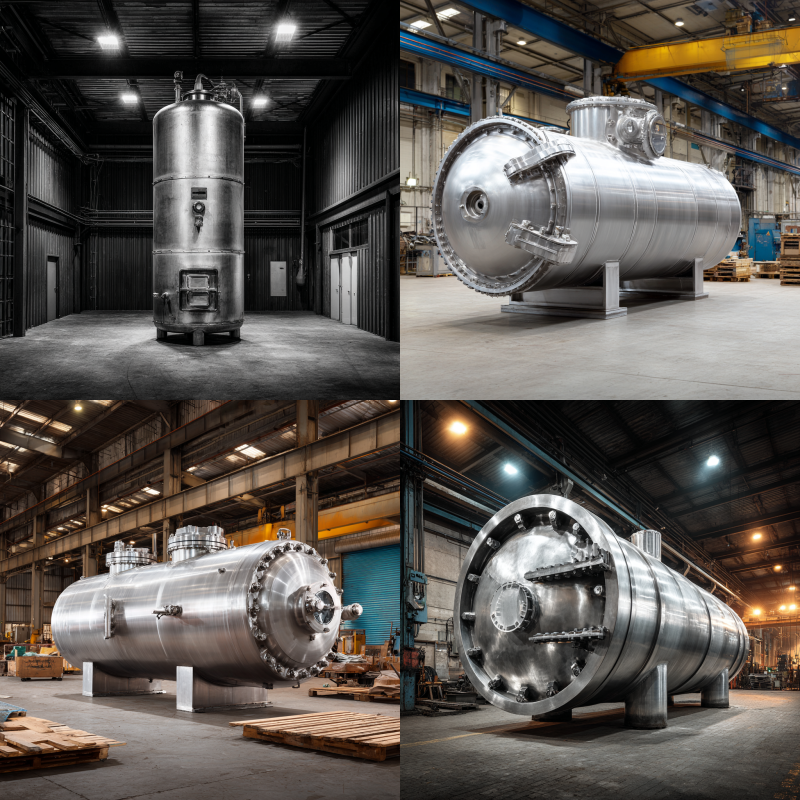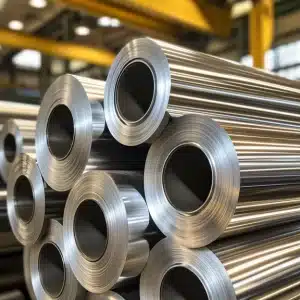
Pressure Vessel Codes Explained: Simplifying Compliance for You
Pressure vessel codes made simple
Complying with Pressure Vessel Codes can feel daunting at first. Yet, when you understand the logic behind Pressure Vessel Codes, you can minimize risks and operate with confidence. Pressure Vessel Codes exist to ensure that tanks or containers holding pressurized fluids or gases meet strict safety requirements. These codes are not just regulatory hurdles—they’re essential blueprints for safe engineering. Whether you’re designing, manufacturing, or inspecting, following Pressure Vessel Codes is critical to avoid failures. By mastering the fundamentals of Pressure Vessel Codes, you pave the way for safer operations and a smoother path to certification.
Understand pressure vessel codes
Pressure Vessel Codes provide essential design, fabrication, and testing guidelines to prevent equipment failures that could lead to leakage, suffocation risks, or catastrophic ruptures. In the United States and many other countries, the main framework comes from the ASME Boiler and Pressure Vessel Code (BPVC), which is widely recognized for its thorough approach to safety. Understanding Pressure Vessel Codes is key to ensuring compliance and avoiding costly mistakes. The good news? You don’t need to be an expert engineer to grasp the basics. By learning how Pressure Vessel Codes apply to your operation, you gain clarity and direction. Let’s walk through the fundamentals plainly and see how Pressure Vessel Codes offer a clear roadmap for safe, legal operation.
Purpose of these codes
- Protect human life and property: Pressure Vessel Codes impose strict design rules, quality checks, and inspection standards that keep you and your team safer on the job.
- Promote consistent results: A vessel built under recognized Pressure Vessel Codes is universally understood to meet certain thresholds of safety, performance, and durability.
- Support global trade: Many countries accept or align with international Pressure Vessel Codes, such as ASME or EN 13445, easing regulatory hurdles if you ship vessels across borders.
- Extend equipment lifespan: Proper design and material choices guided by Pressure Vessel Codes cut the risk of cracks, corrosion, or other failures, giving your vessel a longer life at minimal overall cost.
Key sections at a glance
Most major Pressure Vessel Codes, like ASME BPVC Section VIII, are broken down into manageable parts. For instance, Section VIII handles vessels under internal or external pressures above 15 psi. Each division addresses different pressure ranges—from moderate to extreme. Additional sections of Pressure Vessel Codes cover nuclear components (Section III), nondestructive testing (Section V), welding procedures (Section IX), and more. Knowing which parts of the Pressure Vessel Codes apply to your project helps you avoid costly missteps and stay compliant.
Recognize Global Standards
Understanding different Pressure Vessel Codes is essential if you operate internationally or face varying compliance demands. While ASME is the go-to in the U.S. and much of Canada, other regions rely on their own recognized frameworks. Familiarity with global Pressure Vessel Codes helps you navigate legal, technical, and documentation challenges more efficiently.
EN 13445 in the EU
Europe’s counterpart to ASME is EN 13445, a key part of the Pressure Vessel Codes landscape. It supports compliance with the Pressure Equipment Directive (PED) and is widely used for unfired pressure vessels—those not heated directly by flame. This code offers robust design formulas and leverages advanced validation tools like Finite Element Analysis (FEA) to ensure safety.
CSA B51 in Canada
Canada typically adopts ASME standards, but supplements them with CSA B51, making it an essential part of Canadian Pressure Vessel Codes. This version emphasizes regional needs such as bilingual documentation and specific provincial registration processes. If you’re building for Canadian markets, understanding the integration of CSA B51 into Pressure Vessel Codes is crucial.
AD 2000 in Germany
In German-speaking markets, AD 2000 plays a major role. While it overlaps with PED compliance, it’s often more prescriptive. These Pressure Vessel Codes outline specific design and testing procedures with less flexibility—important to consider when dealing with unconventional shapes or materials.
Others
Beyond the major players, you’ll also encounter Pressure Vessel Codes like the Japanese Industrial Standard (JIS) or Australian Standards (AS). While each varies in detail—materials, formulas, and safety margins—they all aim to uphold the same principle: public and operational safety through reliable vessel design, fabrication, inspection, and maintenance.
Explore major ASME BPVC sections
If you are aiming to buy or fabricate a pressure vessel in the United States—or anywhere ASME is accepted—knowing the highlights of the ASME BPVC goes a long way toward ensuring compliance. For comprehensive information about ASME certified pressure vessels, you can explore how these standards apply to real-world applications.
Section VIII: The core for vessels
This section is the heart of many Pressure Vessel Codes, especially for industrial applications. ASME BPVC Section VIII is divided into three divisions:
- Division 1: For internal or external pressures above 15 psi, commonly used in standard pressure vessels.
- Division 2: For higher pressures (above 3000 psi but below 10000 psi), requiring detailed design-by-analysis—often using Finite Element Analysis.
- Division 3: For extreme pressures beyond 10000 psi, involving specialized materials and enhanced safety protocols.
Division 1 remains the most commonly applied among Pressure Vessel Codes, while Divisions 2 and 3 cater to more demanding use cases.
Section III: Nuclear components
This section of Pressure Vessel Codes is essential for nuclear-related applications. It addresses mechanical and thermal stress under cyclic conditions and includes rules for components in nuclear plants. While it doesn’t typically cover materials exposed to radiation or corrosive elements, its high level of detail makes it indispensable for specialized industries.
Section V: Nondestructive examination
Part of nearly all major Pressure Vessel Codes, Section V lays out how to inspect your vessel without damaging it. Techniques like radiography, ultrasonic testing, and magnetic particle inspection fall under this section. These methods are vital to identify flaws—like weld cracks—before they compromise your equipment.
Section IX: Welding qualifications
Welding is a critical part of vessel integrity, and Pressure Vessel Codes take it seriously. Section IX explains how to qualify welders and procedures, ensuring joints can handle operational stresses. Whether you’re using exotic alloys or tricky geometries, this section ensures your welds are up to spec.
Prepare for 2025 code updates
Standards evolve to reflect new technology, improved materials, and real-world lessons. The ASME BPVC, for example, is updated every two years. The 2025 edition is due to take effect soon, with mandatory changes applying by January 2026. According to LRQA, revisions focus on:
- Clearer distinctions between in-service and construction-focused inspections.
- Refined guidance on material stress, fatigue analysis, and nuclear applications.
- Improved readability and standardized layout to reduce misinterpretation.
If you plan to install new pressure vessels or you are running a fabrication shop, staying on top of these updates could save you costly rework. This is especially relevant if you ship equipment domestically or internationally under multiple regulations.
Avoid common safety risks
Regular compliance checks help protect you from serious hazards. According to OSHA, cracks in pressure vessels present a grave risk. They can leak harmful substances or even rupture, endangering people nearby. Here are some major pitfalls:
- Undersized or worn-out safety valves.
- Overly thin vessel walls that do not match design calculations.
- Improper welds that lead to stress concentrations.
- Corrosion hotspots caused by incorrect material selection.
Sticking to recognized pressure vessel codes drastically lowers the odds of such problems. You will build in the correct thickness, choose the right materials, and prove the final product’s integrity through mandatory tests, such as hydrostatic or pneumatic checks.
Build your compliance plan
You do not have to figure everything out alone. Most code documents provide recommended steps to ensure compliance at each stage. Even so, you want to outline your plan clearly:
Determine applicable codes.
If you are unsure whether your vessel must meet self-imposed or legally mandated standards, seek local guidelines. For an overview, check out what are pressure vessel codes.
Pick the right section.
ASME BPVC Section VIII is your likely starting point, especially Division 1 for typical ranges. For more specialized needs, you might explore what is asme pressure vessel code or what are the different types of pressure vessel codes.
Review design constraints.
Include all factors from temperature swings to possible internal vacuum. If you are not sure, compare notes and see if your equipment might actually be considered a tank—familiarize yourself with what is the difference between a pressure vessel and a tank.
Select appropriate materials.
Ensure your metal or alloy meets the limits for design temperature and pressure. Check what materials are used in pressure vessels for insights on popular steels or advanced composites.
Execute fabrication to code.
Apply the correct welding procedures, stamps, inspections, and calibrations. Keep thorough documentation of every step to smooth out your final certification.
Verify final safety.
Conduct hydrostatic or pneumatic tests at precisely the pressure indicated in Section VIII-1, UG-99 (hydrostatic) or the ASME guidelines for pneumatic tests.
Set a schedule for maintenance and re-inspection.
A well-planned maintenance routine is vital. You can get practical tips from how to maintain a pressure vessel and pressure vessel maintenance.
Embrace pressure vessel codes in conclusion
Pressure vessel codes are your trusted sources for safety, reliability, and peace of mind. By meeting these codes, you avoid potential failures that could lead to major hazards—leaks, fires, or explosions. You also gain a more durable vessel that needs fewer repairs over its lifetime. And when you follow updated standards like the 2025 ASME BPVC, you put your fabrication or operational processes on solid, future-proof ground.
Take a moment to review your existing procedures and see if they align well with your chosen code. Good news, you have access to experts, guidelines, and well-documented steps that accompany each code section. Start small: confirm you have the right design approach, use recommended materials, and do the mandatory tests. Each step keeps you on a proven path that protects people, property, and your bottom line.
Need a reliable partner?
Red River specializes in the design and manufacturing of pressure vessels. We also fabricate related items such as prefabricated spools and skid packages.
Reach out to us today and experience the Red River difference. Where American-made products and American Values come together, we care more.
Frequently Asked Questions
1. What are pressure vessel codes?
Pressure vessel codes are official standards that set the rules for designing, manufacturing, testing, and inspecting pressure vessels—containers that hold gases or liquids under pressure. These codes ensure safety, reliability, and compliance with industry and government regulations.
2. What is ASME pressure vessel code?
The ASME pressure vessel code, officially known as ASME Boiler and Pressure Vessel Code (BPVC) Section VIII, is the most widely used standard worldwide. It outlines requirements for the design, materials, fabrication, inspection, and certification of pressure vessels to ensure they can safely withstand internal and external pressures.
3. What are the different types of pressure vessel codes?
There are several major pressure vessel codes used around the world, including:
- ASME BPVC (USA) – Most globally recognized.
- PD 5500 (UK) – British standard for unfired pressure vessels.
- EN 13445 (EU) – European code for pressure vessels.
- JIS B8265 (Japan) – Japanese Industrial Standard.
- IS 2825 (India) – Indian standard for pressure vessels.
Each code varies slightly in methodology but shares the goal of ensuring safety and performance.
4. Do I need to register vessels if I am outside the US?
Likely. Regions have their own or adopt existing codes, each with registration or approval steps. In Canada, for instance, vessels typically register through provincial authorities using CSA B51, and in Europe, the PED applies.
5. What if I have a non-standard vessel shape?
In more complex designs, you can use Finite Element Analysis (FEA) or advanced design by analysis under ASME VIII-2. This approach properly tackles irregular geometries.
6. Does code certification expire?
While the vessel’s official stamping remains through its life, many jurisdictions mandate regular inspections, repairs, and re-ratings if your operating conditions change significantly.
7. Are these codes legally enforced?
Yes, in most regions. OSHA in the US, for instance, can require compliance. Other countries or localities have agencies to ensure that your pressure vessel meets recognized safety standards.
Key takeaways
- Aim for recognized standards. Codes like ASME BPVC or EN 13445 lay out clear design, fabrication, and testing protocols to reduce safety risks.
- Choose suitable divisions.Section VIII is critical for general vessels, but specialized operations (like nuclear or very high-pressure) may need other divisions.
- Stay updated. The 2025 ASME revision clarifies inspection, material stress, and layout. Align your designs now to meet the January 2026 deadline.
- Use proper welding procedures. Section IX sets the guidelines for welder qualifications and method verification, vital for leak-free and strong connections.
- Inspect regularly. Schedule routine checks and tests to detect c
Related Blog Post

Marine-Grade vs Standard Stainless Steel

Pros and Cons of Vertical Integration

How to Dry Desiccant Properly and Regain Its Effectiveness

Why Do Gas Turbines Need Fuel Water Separator Vessels, Red River

